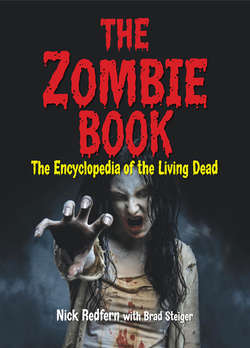Читать книгу The Zombie Book - Nick Redfern - Страница 55
Cold War
ОглавлениеIf, one day, the zombie virus becomes not just an issue of fiction but one of stark, terrifying fact, the possibility cannot be denied that it may fall into the hands of terrorists, ones that may wish to see it used to target specific nations and wipe them out in apocalyptic style. It might sound outrageous, but official files that have surfaced under the terms of the U.S. government’s Freedom of Information Act show that, back in the 1940s, there were significant fears on the part of officialdom that a hostile nation—or a rogue body of terrorists—might infect the American cattle herd with a deadly virus, one which could quickly spread to the human population and utterly decimate it.
Prepared by the Committee on Biological Warfare at the request of the U.S. government’s elite Research and Development Board, the fifty-page file in question dates from March 1947 through the latter part of 1948 and makes for disturbing and grim reading.
In a Top Secret paper from March 28, 1947, it was stated that: “A memorandum from the Secretaries of War and Navy dated February 21, 1947, Subject: International Aspects of Biological Warfare, regarding biological warfare in relation to United Nations negotiations for regulation of armaments was referred by the Board to Committee ‘X’ for consideration and recommendations.”
Seven months later, the Research and Development Board prepared an in-depth report (also classified at Top Secret level) that outlined its worries concerning biowar. The Board stated: “Preparations for biological warfare can be hidden under a variety of guises. The agents of biological warfare are being studied in every country of the world because they are also the agents of diseases of man, domestic animals, and crop plants. The techniques used in developing biological warfare agents are essentially similar to the techniques used in routine bacteriological studies and in the production of vaccines, toxoids, and other beneficial materials.”
In its report, the Board continued: “… the Committee feels that although it may be possible to control atomic research and insure that it be devoted to peaceful purposes, it is impracticable to control research on biological agents because of the close similarity between such research and legitimate investigations of a medical, agricultural, or veterinary nature.”
What of the possibility that biological warfare could have been utilized as a weapon of mass destruction and the cause of extreme devastation, via the spreading of a deadly virus? In March 1947, the Board had its doubts that biological warfare could be considered a tool of destruction on par with atomic weapons; however, seven months later that view had changed radically.
With respect to this matter, in October 1947, the Board recorded that: “On the basis of present knowledge the Committee feels that biological weapons cannot be compared in their effect with such so-called weapons of mass destruction as, for example, the atomic bomb. It is doubtless true that if a self-sustaining epidemic of a fatal disease could be established in a human population, indiscriminate destruction of life on a great scale might result. However, as has been pointed out earlier in this discussion, the Committee knows of no epidemic agent that could presently be used with confidence in its significant epidemic-producing property.
“The spread of epidemics depends upon a number of complex inter-related factors, many of which are poorly understood or perhaps even unknown. Furthermore, it is believed that the chances of discovering an unusually virulent epidemic-producing biological agent is highly improbable and cannot be anticipated at any time in the predictable future.”
So much for the Committee’s beliefs with respect to biological warfare and the human race.
